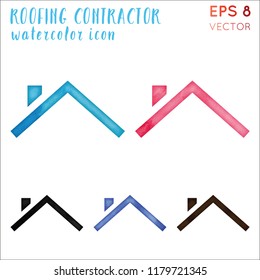The Influence Of Weather Conditions On Business Outside Painting: Key Factors To Consider
The Influence Of Weather Conditions On Business Outside Painting: Key Factors To Consider
Blog Article
Content Author-Duke Hollis
When you're planning a business exterior paint task, don't underestimate the influence of climate on your outcomes. You need to take into consideration factors like temperature, humidity, and precipitation, as they can make or break your paint job. As an example, did you know that suitable problems ask for particular temperature arrays and moisture degrees? Stopping working to monitor these aspects can bring about uneven finishes or perhaps damages to fresh paint. Recognizing these components is vital to accomplishing a lasting, expert result. So, what certain weather should you watch out for?
Temperature level Considerations
When it comes to commercial external painting, temperature plays an important duty in the result of your job. If you're painting in extreme warm, the paint can dry out also rapidly, leading to issues like inadequate adhesion and irregular surfaces. You wish to go for temperature levels in between 50 ° F and 85 ° F for the best outcomes. Below 50 ° F, paint may not heal correctly, while over 85 ° F, you take the chance of blistering and splitting.
Timing your job with the best temperatures is necessary. Start your job early in the morning or later on in the afternoon when it's cooler, particularly during hot months.
Also, think about lake oswego exterior painters can be considerably more than the air temperature level, particularly on sunny days. Make use of a surface thermometer to inspect this before you start.
If temperature levels are uncertain, keep an eye on the weather report. Unexpected temperature decreases or heat waves can hinder your strategies. You do not intend to begin repainting only to have the conditions transform mid-project.
Humidity Levels
Moisture levels significantly impact the success of your business exterior paint job. When the humidity is too expensive, it can hinder paint drying out and curing, causing a series of concerns like bad adhesion and complete quality.
If you're preparing a task during moist conditions, you may find that the paint takes longer to completely dry, which can extend your task timeline and boost prices.
Alternatively, reduced moisture can also posture obstacles. Paint may dry out also quickly, stopping proper application and causing an irregular finish.
You'll intend to keep an eye on the moisture degrees carefully to guarantee you're working within the optimal array, commonly in between 40% and 70%.
To obtain the most effective outcomes, consider making use of a hygrometer to measure moisture before starting your task.
If you find the degrees are outside the optimal array, you might require to readjust your schedule or choose paints designed for variable problems.
Constantly speak with https://onmilwaukee.com/articles/house-paint-properties for specific recommendations on moisture resistance.
Rainfall Effect
Rainfall or snow can significantly interrupt your business outside paint strategies. When precipitation occurs, it can get rid of fresh used paint or create an irregular finish. Ideally, you intend to pick days with completely dry climate to make sure the paint adheres appropriately and remedies properly. If you're captured in a rain shower, it's best to halt the task and await conditions to improve.
In addition, snow can be a lot more detrimental. Not just does it produce a damp surface, but it can additionally decrease temperatures, making it hard for paint to completely dry. This can lead to issues like peeling off or blistering down the line.
It's important to inspect the weather report before starting your project. If rainfall or snow is anticipated, think about rescheduling.
Always bear in mind to enable appropriate drying time in between layers, specifically if the weather condition stays unpredictable.
Final thought
Finally, watching on the weather condition is crucial for a successful industrial exterior painting job. By monitoring temperature, moisture, and precipitation, you can make certain the very best conditions for application and curing. Remember to prepare your work around beneficial weather and always follow producer guidelines. With the right method, you'll accomplish a lasting, stunning surface that can withstand the components. Don't let the weather condition catch you unsuspecting-- remain educated and repaint wise!
